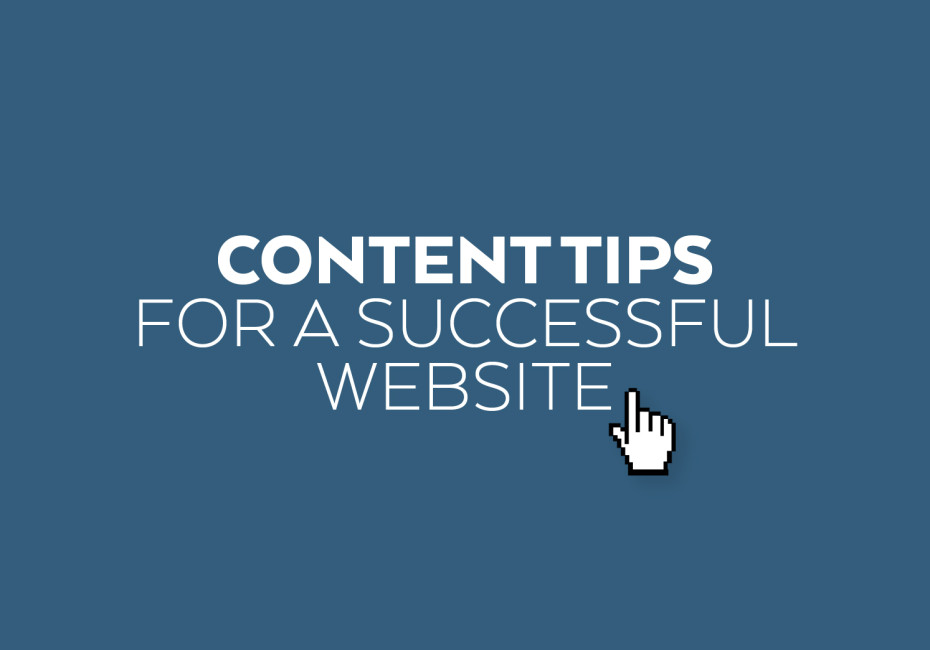Related services
There's a common misconception that great design will deliver a great website. On the contrary, a website might look fantastic and have all the bells and whistles, follow the latest design trends and boast the latest tech but the truth is - if your content sucks, your website sucks.
When working on the content of your website it's important that you consider who you're writing it for. Why is this person visiting your website? How have they got there? What questions will they have and how can you answer them? If you write copy without your target audience in mind at all times then it's possible that you're going to miss the mark. This brings us to an important step in the process of creating great content for your website: planning.
How to plan content for your website
Fail to plan and you're planning to fail, right? This couldn't be more true than with your website. Before you start, consider the following:
Who is my target audience and why are they visiting?
People visit websites for a reason. Maybe you're shopping to find the perfect dress, maybe you're trying to find a piece of software that will make your work life easier - maybe you're looking for advice about how you can improve the content of your website... Whatever it is, you need to be aware of what is driving your visitor's journey and plan how you're going to deliver what they're looking for quickly and easily.
Next we need to think about what sort of person this is, are they time-poor? If so you need to make your content succinct and split it into bitesize chunks. Are they particularly experienced? If not you'd better cut down on the industry jargon.
What keywords do I need on my website?
Google loves content, in fact it's pretty much it's favourite thing. A website that's quick and easy to use is all well and good but if Google thinks that the content on your website isn't relevant to a user's search term then you're done. The key points to consider here are 'what terms are people searching for' and 'how can I make sure my website is relevant to these users?'. You may have already come up with a few terms/keywords when planning step one above and it all comes back to why your users are visiting your website. Try to think about the language that these people might be using, what phrases they might be searching for and what features or benefits your product/service can offer them. These should form the basis of your keywords.
For example, let's say you've opened a restaurant and you serve Italian food. People might be searching locally for 'best Italian restaurant' or 'pizza restaurants London' and these would be fairly standard things to have covered by your site. On the other hand these are general searches and it's likely these people are looking at a fair few other restaurants nearby. OK so imagine it's now January - what if you created a page or added a new heading such as 'Healthy pizza options' or 'Low calorie pasta dishes available' or maybe you can pick up on the latest resolutions with something like 'Vegan and gluten free food served here'. Now we're focusing on a user's real needs and your website is catering for them (if you excuse the pun).
How long is it going to take to write my content?
If you're not a professional or writing doesn't come naturally to you then producing content for your website will take a while and it's worth leaving plenty of time aside to work on it. If you have a tight deadline for the launch of your site or you really want to get the very best performance out of your investment then we'd suggest you approach a professional copywriter or discuss your requirements with your web design team. If however you'd prefer to write your own content then it's just important not to rush things. We'd suggest that you start writing the text and gathering images for your website at the point you're commissioning the web design. Not only will this allow you plenty of time to draft, review and iterate but from a designer's perspective it's vital to at least have draft content ready for your site before they start sketching out ideas. Otherwise creating content post-design will mean that you'll be somewhat bound by the assumptions your designer has inevitably had to make.
How to create a content schedule
Writer's block is real. We know well enough that keeping your blog or website up to date on a regular basis can be time consuming and sometimes a bit daunting. This can be made easier by creating a content schedule. If you've followed the steps above then you'll likely have a list of what your customers are looking for and what they value the most from your product or service. Our simple tip is to take these points and break them down into smaller topics, once you've done that repeat the process and you'll have the makings of a simple content schedule.
Let's look at an example. Say you're an architect or builder and you've decided that most of your customers are coming to you for extensions rather than a new Grand Design, from experience you can also summarise that your customers value craftsmanship, good customer service and a low price. Using this information we can safely assume that a blog post titled 'Our tips for a low cost, high quality home extension' would gain some traction. Great so that's one down, let's split it into some smaller topics - how about:
Rear or side extensions : which are cheaper?
Top tips for cost-effective loft conversions
So we're up to three, let's go deeper:
Flooring - achieve that high end look for less
Or thinking about the bigger issue:
Move home or extend? Get the best for your budget
So you can see how splitting content into smaller topics ('atomising') we have a number of articles targeted at your core audience without having to stress yourself over subject matters. If you repeat this process for each of your core services and customer values you'll find that scheduling a post every month or even every week becomes a less daunting concept.
In summary
As with most things in life, throwing yourself at a project without a plan doesn't lead to the best results. It's likely you've invested a great deal in your website so it's vital that it's nurtured to make sure it continues to gather interest from the right people to give you a good return. By following the steps above you should now have the makings of a quality content marketing strategy - give yourself a pat on the back for putting in the effort and reap the rewards!
For more news follow us @rootstudiouk
Similar posts

In a world crammed with endless scrolling, pop-ups, flashing offers and ‘read more’ rabbit holes, the real competition isn’t just other businesses - it’s cognitive overload.

Most websites don’t have a traffic problem - they have a conversion problem. Conversion Rate Optimisation (CRO) is simply about spotting issues and opportunities and gently guiding more of your visitors to take action.

